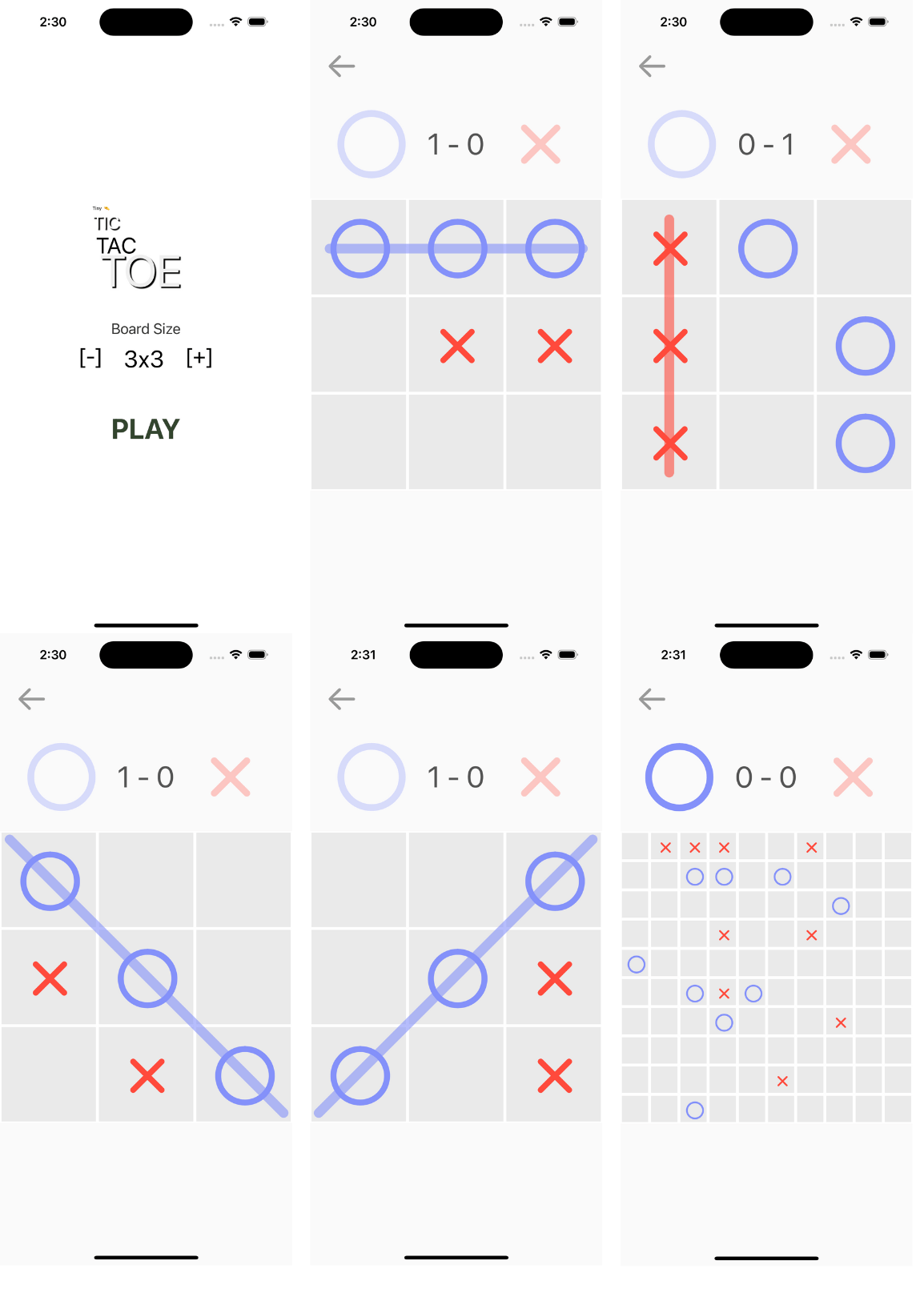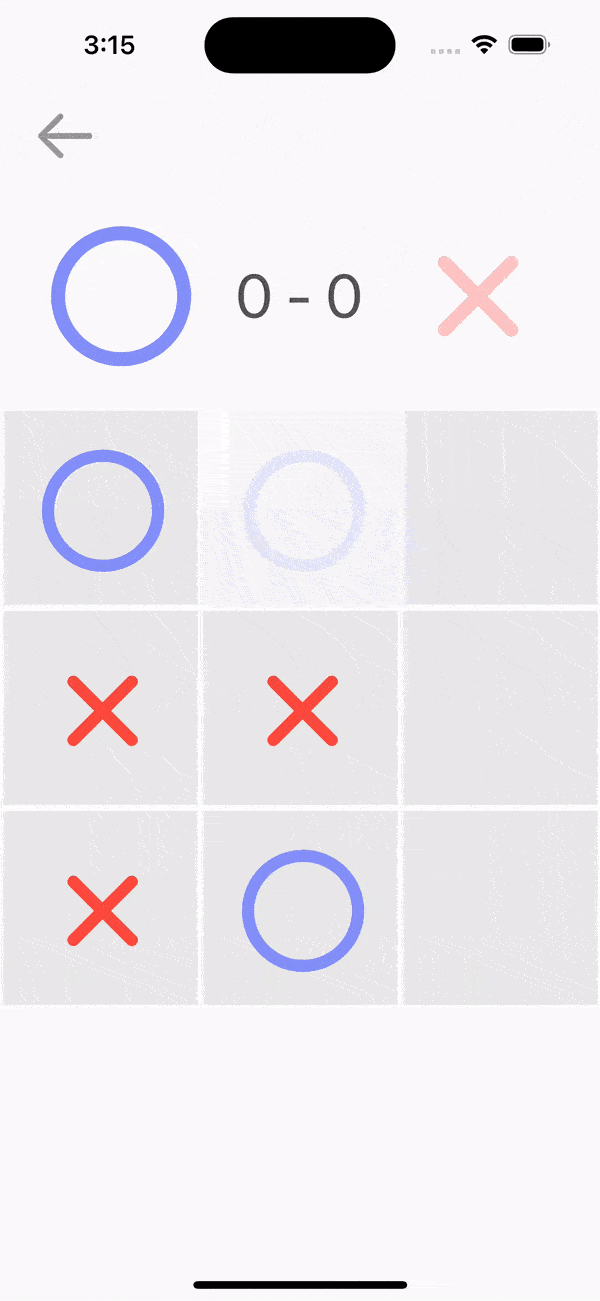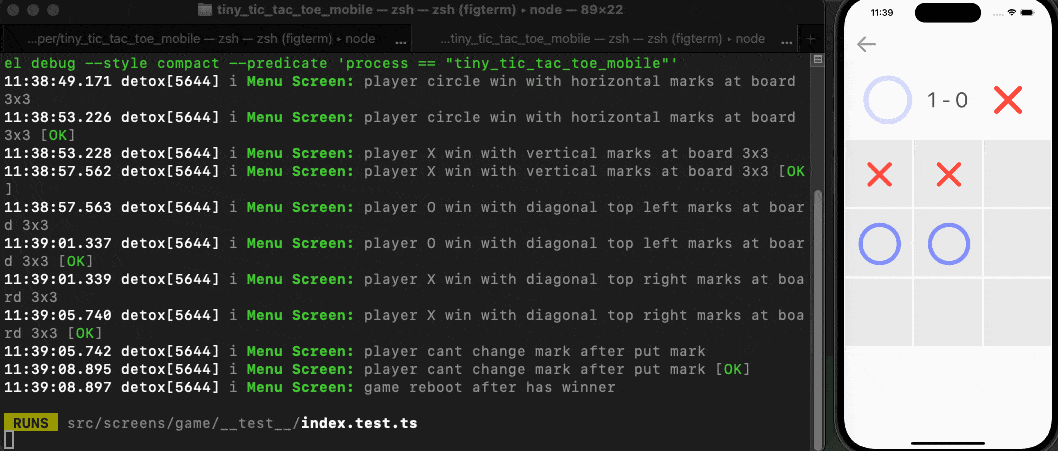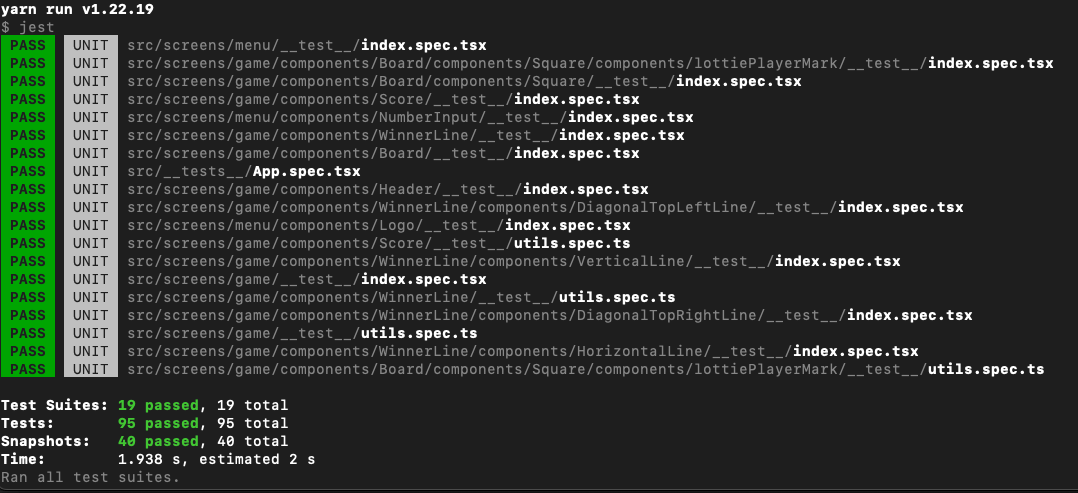This is a Tic-tac-toe game built with TypeScript and React Native, designed to run seamlessly on both Android and iOS devices. The primary focus of this project is to explore the fundamentals of creating a mobile application using minimal external dependencies.
This project is not focused on how to create a video game. I recommend exploring other technologies to learn more about game development.
Tic-tac-toe,also known as noughts and crosses or Xs and Os, is a classic two-player game that is easy to learn and can be played anywhere with just a piece of paper and a pen.
The goal of Tic-tac-toe is to be the first player to form a line of three of your marks (either "X" or "O") horizontally, vertically, or diagonally on the game board.
This project is intentionally lightweight, aiming to minimize the reliance on external libraries and frameworks. It serves as an excellent resource for those looking to understand how to build a React Native application from the ground up.
The game incorporates simple yet effective animations to enhance the player's experience. These animations add a touch of interactivity and visual appeal to the game.
Testing is an integral part of this project. It includes unit tests using Jest to ensure individual components and functions are working correctly. Additionally, end-to-end tests with Detox help validate the overall functionality of the application.
After running Jest tests for the first time, a new folder called coverage will be created. You can open the file coverage/lcov-report/index.html to view the
full coverage results from the previous test run.
To foster modularity and reusability, each component is designed to be as
decoupled as possible. This means that components,
such as the player mark animations (LottiePlayerMark), can be easily extracted
and used in other projects without compatibility issues.
This is achieved by relying on primitive data types and minimizing shared dependencies.
//Component example
<LottiePlayerMark
color={'red'}
backgroundColor={'blue'}
isVisible={true}
isCircle={false}
squareSize={100}
/>Before you begin, ensure you have met the react native requirements:
Setting up the development environment
- Clone this repository:
git clone https://github.com/mmbelkiman/tiny_tic_tac_toe_mobile - Navigate to the project's root directory:
cd tiny_tic_tac_toe_mobile - Install project dependencies:
yarn installIn the project directory, you can run:
yarn start
# Starts the Metro bundler yarn ios`
# Runs the iOS app in the simulator.yarn android
# Runs the Android app in the emulator or connected device. yarn test:unit
# Launches the test runner with jest yarn test:2e2
# Launches the test runner with detox
# (is necessary the project is running with bundle at iOS simulator)yarn detox:build:debug
# Builds the detox- Jest: Famous JS testing library
- Detox: End-to-end testing and automation library for React Native.
- Lottie-React-Native: Lottie is an ecosystem of libraries for parsing Adobe After Effects animations exported as JSON with bodymovin and rendering them natively!
If you'd like to contribute to this project or have any suggestions for improvements, feel free to open an issue or submit a pull request. I will be happy to discuss better approaches for this project.
This project is open-source and available under the MIT License. You are free to use and modify the code as needed.
- Show a message when the game is over (winner/draw)
- Add some sound effects
- Add a physical shake
- Add the possibility of playing versus a computer
- Add a new config to set how many points are necessary to win. e.g: At board 9x9, set to win a game with 3 sequential marks only








